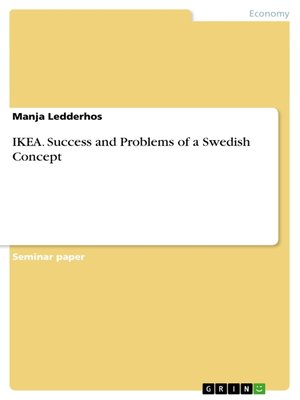
Sign up to save your library
With an OverDrive account, you can save your favorite libraries for at-a-glance information about availability. Find out more about OverDrive accounts.
Find this title in Libby, the library reading app by OverDrive.



Search for a digital library with this title
Title found at these libraries:
| Library Name | Distance |
|---|---|
| Loading... |
1.1. Background Information
IKEA is a well known Swedish company where almost every European person under 30 has
purchased something from to decorate their flats. In only a few decades the company "went
from the woods of southern Sweden to 31 countries around the world"1 and has become a
large Multinational cooperation (MNC) with an interorganisational network.2 Higher tariffs,
transport costs and the loss of economies of scale in domestic production further encourage
production abroad.3 The Swedish market is comparably small and IKEA had to expand in
order to keep their steady growth rates. The success came as a surprise to many since the
furniture business is originally a local business.4 IKEA is the only company in their field, that
has been able to expand so widely. The company seems to offer something that is unique to
people and that appeals to them as something preferable. The background of the company
seems to play a role in managing this uniqueness where Swedish influence on leadership,
corporate culture and product offer leads towards the successful "IKEA spirit".
While the internationalisation of IKEA is one of the reasons for their great success, it seems
that it is also the source of trouble. It seems that today's "game of global strategy [is]
increasingly ... a game of coordination"5. The difficulties that IKEA faces is to keep their
unique "IKEA spirit" and still be successful around the world.
1.2. Aim of the Paper
The aim of the paper is to look at the sources for IKEAs success where special emphasis will
be given to the Swedish impact on leadership, corporate culture and product offer and the
success they have with it. Internationalisation puts challenges on the above success areas and
those need to be evaluated, as well.
1.3. Delimitations
IKEA is a very complex company and I couldn't concentrate on all of the given information.
For example, I did not write about the purchasing network and relationships to suppliers.
Also, customer contacts are not dealt with in depth.
1 http://www.IKEA.com/about_IKEA/timeline/splash.asp, (21.02.03).
2 Forgens/Holm/Thilenius (1997). p.477.
3 Buckley/ Casson (1998). p. 555.
4 Grol/Schoch (1998), p.







